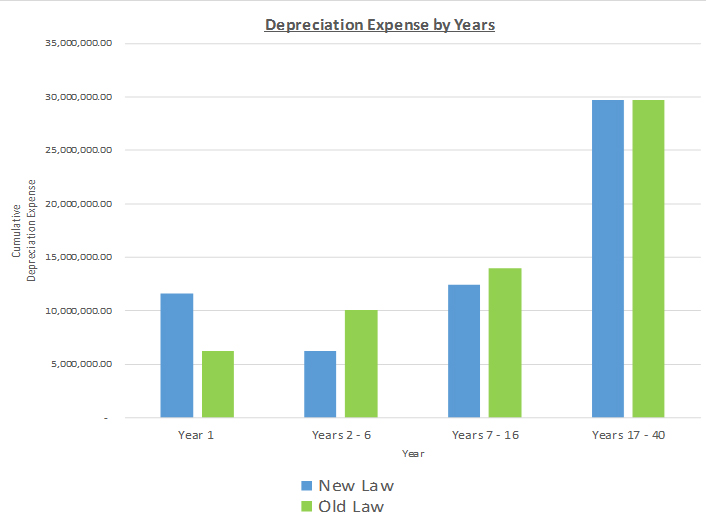SVN | Graham, Langlois & Legendre Joins Stirling Properties to Expand Presence in the Baton Rouge Area
Stirling Properties and Baton Rouge-based SVN | Graham, Langlois & Legendre (SVN | GLL) announce a strategic merger to combine commercial real estate services in the Gulf South region and expand their presence in the burgeoning Greater Baton Rouge market.
Joining forces will enable the companies to compete more efficiently and effectively in the local commercial real estate market and will significantly increase market share through an expanded portfolio, service offering and team capacity.
SVN | Graham, Langlois & Legendre’s current office staff, brokerage team and commercial listings will integrate into Stirling Properties’ brand and operations. Ben Graham, Justin Langlois and Steve Legendre, SVN | GLL’s founders and managing directors, will each be named Regional Vice President and assume a leadership role within Stirling Properties.
Established in 2014, SVN | GLL quickly became the third largest commercial real estate company in Baton Rouge. The company consistently ranks as a top 25 SVN office nationally among 200+ across the US. SVN | GLL specializes in sales and leasing services for retail, land, office, industrial and multifamily properties, as well as property consultation and business brokerage services throughout Louisiana and Mississippi.
Justin Langlois, Founder & Managing Director of SVN | GLL, said, “Combining the transactional brokerage expertise of GLL with the property management experience and full comprehensive real estate services of Stirling Properties allows us to collectively accomplish more together than either group could individually. Our companies have similar, complementary strengths that make a great marriage. We are excited for our clients and commercial real estate advisors, and we look forward to bringing a whole new arsenal of products, tools and skillsets to the Greater Baton Rouge market.”
Marty Mayer, President & CEO of Stirling Properties, said, “Stirling Properties is thrilled to join forces with the team at Graham, Langlois & Legendre. Their excellent reputation, strong local presence and successful track record are what immediately attracted us to the company. None of this works though, if there is not a cultural fit, and it was evident from our first meeting that both sides were aligned on culture, community engagement and business philosophy.”
Stirling Properties and the SVN | GLL team will temporarily operate out of their respective offices until later this year, when they will consolidate under one roof in a newly-designed office space with an expanded footprint to better serve the Capital Area.
Stirling Properties is located in United Plaza II at 8550 United Plaza Boulevard, Suite 303, and now, 6160 Perkins Road, Suite 200 (GLL office), in Baton Rouge. For commercial real estate needs and information in the Greater Baton Rouge area, contact Stirling Properties at (225) 926-4481.
Chipping In For Charity
Local charities score big during
Stirling Properties’ Annual Stirling Invitational Golf Tournament
Stirling Properties hosted its 18th Annual Stirling Invitational Golf Tournament on Monday, October 8th at University Club Plantation in Baton Rouge, Louisiana. This year’s tournament successfully raised more than $25,000 for local charities!
113 participants enjoyed a variety of friendly competitions in addition to 18 holes of scramble golf tournament play. Congratulations to the 1st Place Low Net winners, Stuart Bonaventure, Ryan Juneau, BJ Branigan and Trent Sandahl. The Low Gross winning team included Andy Coleman, David Laizer, Tommy Buckel and Dennis Shill.
The Longest Drive award went to Marc Bourgeois, and Closest to the Pin prizes were presented to Eric Landry, Paul Geyer and Chip Songy. Additional awards were given for 2nd, 3rd and 4th Low Gross and Low Net. A special shout out to the Highest Gross scoring team, William McKnight, Beau Egan, Elliot Turner and Neal Choppin.
However, the real winners of the day were the local nonprofit organizations that benefited from the tournament proceeds. Ochsner Foundation received $10,000 from the proceeds, and the remaining profits will be distributed to various local charitable causes.
Representatives from Ochsner Foundation were on hand to receive a check for their contributions. Grady Brame, Executive Vice President with Stirling Properties, presented a check to Louisa Post, Ochsner Foundation’s Director of Development for Baton Rouge, during an awards celebration and cocktail reception following the tournament. Rick Perry, President and CEO of Tiger Athletic Foundation, was also presented with a $1,000 check to TAF for the LSU Golf Team.
“A great time—for a great cause—was had by all. We are fortunate to be able to play such an outstanding course, and to have the opportunity to help raise funds for local nonprofit organizations that are doing critical work in our community,” said Brame. “We could not accomplish all of this without the generosity of our tournament sponsors. We want to thank all of our sponsors and everyone who came out to support our event.”
The Stirling Invitational Golf Tournament has contributed more than $239,000 to numerous organizations over the past 18 years.
Thank you to all of our friends and supporters who participated and contributed to the Stirling Invitational Golf Tournament. This event would not be possible without you.
#StirlingProud
Additional sponsors include Netchex, Newmark Knight Frank, Metairie Bank, Real Estate Tax Group, Big Easy Parking Lot Maintenance, Gulf South Electric, Dixie Office Products, Metro Mechanical Inc, Covington Electric Services Inc, Geiger Heating & Air, Jones Fussell LLP, PMAT Real Estate Investments LLC, Premium Parking, River Parish Disposal, Certified Air Conditioning, Roth Law Firm LLC, Ryan Gootee General Contractors, Larry Loyd Construction Co. Inc, ITS Fire Alarm Security, Southeastern Waterproofing, Trimark, Palmisano Group, Robert Levis Development LLC, Mullin Landscape Associates, Premier Service Team LLC, Codaray Construction LLC, Chrestia & Inc, B&G Lawn Maintenance LLC, Gene Nims Builders, NcNeer Electrical Contracting Inc, Dale’s Paving Inc, Southern Farm Bureau Life Insurance Company, CMC (Calcasieu Mechanical Contractors), Angelos Landscaping, Cook Moore & Associates (Cornerstone), Cost Segregation Services Inc. (CSSI), Huseman, Jeffrey Lipp Parking Lot Services, Precision Concrete Cutting of Louisiana, Professional Maintenance Services, , Unit Design Inc, Thermal Products Inc, Grass Unlimited, Crystal Clean Sweeping, Landry’s Lawn, T.L. Construction LLC, ACA Mechanical Industrial Inc, CertaPro Painters, CJ Ladner (State Farm), Sign Lite, Jimmy Maurin, James Hudson, and Roger Ogden.
A huge shout out to Fidelity Bank for sponsoring lunch.
Appreciation for Depreciation
The Tax Cuts and Jobs Act contains many major changes to the tax landscape that will affect every type of business entity, both large and small. The new tax reform creates significant opportunities to minimize a business’s overall tax burden.
Perhaps the most impactful—and favorable—legislation to the real estate industry is the changes and modifications to depreciation rules. Here we highlight key components that impact the commercial real estate industry and provide a comparison between the current and new tax laws.
Under prior tax law, most assets held in rental real property were required to be depreciated over periods typically ranging from 5-39 years. Assets with 20-year class lives or less were normally eligible for 50% bonus depreciation, which means we could deduct 50% of the asset in the first year and depreciate the rest over the remaining life of the asset. Under the new law, those same assets are now eligible for a 100% deduction in the year placed in service. Congress has also expanded bonus depreciation to acquisitions, which were not eligible in years past. This is a huge benefit for real estate in many ways, as it allows for significant tax write-offs in the first year for acquisitions, new developments, and redevelopments.
At Stirling Properties, we contract out a cost segregation study on all of our new acquisitions, developments, and redevelopments. These studies allocate the purchase price of the asset into its proper class life. The resulting history allows us to estimate what depreciation will look like on the project during underwriting. On the front end of our due diligence, we have an accurate idea of how much of the purchase price is going to be eligible for the new 100% bonus depreciation. For a $60 million acquisition or development, we estimate that as much as 20% of that investment can be expensed in year one, resulting in over $11 million in depreciation. As you can see in the chart below, depreciation expense has approximately doubled in year one as compared to the old law. The net present value (NPV) of the tax savings resulting from being able to deduct the additional depreciation in year one is over $500,000.
Similarly, ongoing operations of the property will be impacted considerably. To attract and retain high-quality tenants, landlords typically provide tenant improvement allowances which result in enhancements to the occupant’s space that revert to the landlord upon lease expiration. Under the prior law, these tenant improvement allowances were typically eligible for 50% bonus depreciation and the balance depreciated over 15 years. Under the new law, these allowances will be eligible for a 100% deduction in the year placed in service.
Investing in real estate can be a tax advantageous way to deploy capital, especially for individuals or companies that have significant recurring income tax burdens such as financial institutions. We anticipate that the new tax law will lead to higher demand for quality assets helping to keep deal flow robust, thus attracting more buyers and investors into the real estate arena. At Stirling Properties, we will continue to utilize this new tax law for the best interest of our properties and investors.
Disclaimer: The information contained herein is intended for information purposes only. Individuals should seek advice directly from a qualified professional before making any decisions or taking any action that might affect your personal finances or your business. Stirling Properties is not responsible for any investment or monetary decisions made based on the information provided above and is not a tax advisor. The information provided above was done so with the perceived intent of the legislation and not based on the actual regulations. The actual regulations could yield significantly different results.
Tax Reform & Real Estate… It’s a good time for our industry
The Tax Cuts and Jobs Act passed in December and several of these provisions will take effect in 2018. Many individuals have already benefited from the new tax law by seeing their recent paychecks increase. We believe this tax reform will have a similar positive impact on the real estate industry. Tax reform can be a very complicated—and tedious—topic so we’ve highlighted some of the implications for real estate owners, small business owners, and individuals. We’ll preface by saying this is our interpretation of the law, prior to the regulations being written and what we think Congress intended by the text of the law.
Initially, many of us in the real estate industry were very concerned about tax reform and the negative aspects that were being considered. The International Council of Shopping Centers (ICSC), responded by forming a committee consisting of executives and tax professionals across our industry to garner input to deploy lobbying efforts. Stirling Properties played a significant part in providing consistent feedback that guided ICSC’s lobbying efforts. Several executives in our company, including Marty Mayer, Townsend Underhill, Jimmy Maurin, Will Barrois, and me, were active in lobbying congress, and as noted below, these efforts were successful. Together, we were able to quickly respond to aspects of the tax proposal that were detrimental to the real estate industry and offer solutions that would benefit our real estate holdings and the business as a whole. We’ve compiled a brief overview of some of the changes.
Real Estate Business Owners and Investors
- Expanded Bonus Depreciation: Items that were previously required to be capitalized over 15 years (subject to 50% bonus depreciation) are now eligible for a 100% deduction in the year of completion.
- Examples of these items include parking lots, landscaping work, pylon lighting, etc.
- This provision begins to phase out after 5 years.
- Business Income Deduction: 20% of the taxable income generated from a business could be eligible to be deducted from taxable income pending multiple limitations.
- For example, if your share of taxable income from a business you own is $100,000, the first $20,000 may be eligible for a deduction, thus lowering taxable income to $80,000.
- Business income from pass-through entities like partnerships and LLCs will still be taxed at the new lower individual rates.
- Historic Preservation and Rehabilitation Tax Credit: The 20% credit for renovating certified historic structures remains in place but must be taken over a 5-year period as opposed to being fully deductible in the year of completion under the existing law.
- C-Corporations Tax Rate: The corporate tax rate under the new law is 21% as compared to 35% under the existing law.
- Property Tax Deduction: Still in place for real property trade or businesses including rental properties.
- Interest Expense from Loans: Businesses will still be eligible to deduct the interest expense from the debt incurred if its gross receipts are less than $25 million.
- The vast majority of commercial real estate in the Gulf South region would continue to be eligible to deduct interest.
- 1031 Exchanges: Real estate will still qualify to receive 1031 treatment.
- Capital Gains Rates: Remained unchanged at 0%, 15%, and 20% depending on income levels.
- Carried Interest: The new law requires a 3-year holding period to qualify for capital gains treatment as opposed to a 1-year holding period under the current law. This was a “win” for real estate as the original proposal was for carried interest to be taxed at ordinary rates.
Individuals
- Tax Rates: Almost every bracket has been widened and lowered with the top bracket being lowered from 39.6% to 37% thru 2025.
- Standard Deduction: Single filer’s standard deduction increased from $6,350 to $12,000. Married filer’s standard deduction increased from $12,700 to $24,000.
- Personal Exemptions: Taxpayers will no longer be eligible to deduct the $4,100 per dependent.
- Child Tax Credit: The child tax credit increased from $1,000 to $2,000.
- State and Local Taxes: Deduction under the new law is capped at $10,000.
- Estate Tax Exemption: Doubled to $11.2 million for single filers and $22.4 million for married couples.
At the end of the day, the real estate industry appears to have fared well in the Tax Cuts and Jobs Act. Some of these items are pending a technical corrections bill and additional clarification, but the expanded bonus depreciation and business income exclusion make being a real estate investor an enticing proposition. For investors looking to deploy capital in a tax advantageous investment, real estate is an appealing option that will rival alternative investments. We believe tax reform will provide a stimulus for real estate investment over the next five years.
We will follow up with more in-depth coverage of some of these items in the future, as well as how Stirling Properties is adapting to take advantage of this new opportunistic landscape.
The information contained herein is intended for information purposes only. Individuals should seek advice directly from a qualified professional before making any decisions or taking any action that might affect your personal finances or your business. Stirling Properties is not responsible for any investment or monetary decisions made based on the information provided above and is not a tax advisor. The information provided above was done so with the perceived intent of the legislation and not based on the actual regulations. The actual regulations could yield significantly different results.












